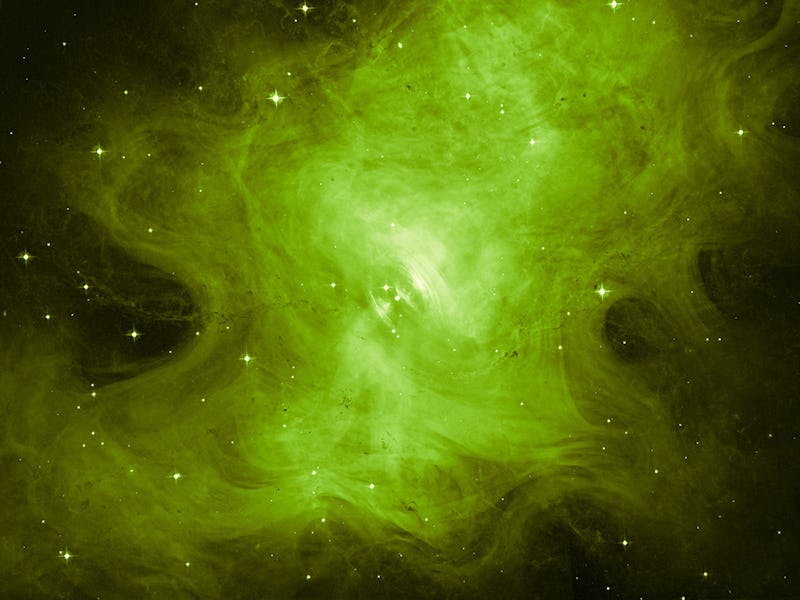Hubble Catches Glimpse of the Crab Nebula's Beating Heart
The space telescope peered into the heart of the Crab Nebula and found an eerie surprise.

The Crab Nebula may be one of the most famous objects in the sky, but it’s also a stellar burial ground — housing the undead corpse of a zombie star. The eerie glow of this ghoulish object permeates through the surrounding gas and dust, creating a spectacle perfect for Halloween’s arrival, as seen in the latest image captured by the Hubble Space Telescope.
At the heart of the nebula is the crushed up core of a once massive neutron star. Packing roughly the same mass as the sun, but squeezed into an ultra-dense sphere, the tiny, stellar powerhouse can be seen at the center of the image seen above. Despite going supernova, centuries ago, this ghastly object still has a steady pulse, beating with rhythmic precision. It’s so steady that astronomers can set their watches by its flashes, which occur about 30 times each second.
Though an ancient relic, this cosmic beacon is anything but peaceful. A deadly magnetic field, capable of producing an electrifying one trillion volts, makes the Crab Nebula a tremendously powerful dynamo, with wisp-like waves forming an ever expanding ring (seen in the upper right of the pulsar).
Hubble captures wave-like rings expanding outward from the "heart" of an exploded star.
The Crab Nebula was first identified in 1731 (by Charles Messier) and subsequently named in 1844 as M1 (for Messier 1). The crab moniker is obviously derived from its resemblance to the famed crustacean.
However, the progenitor star actually exploded 7,500 years ago. Light from the massive explosion spread out in all directions, and after traveling 6,500 light-years, the light finally reached the Earth. The first humans spotted it in the spring of 1054 A.D., but didn’t have the scientific knowledge to truly understand what they were witnessing. It wasn’t until 1928 that Edwin Hubble linked the nebula to the 1054 supernova event.
While the hot gas within the nebula shines across the spectrum, Hubble used its visible light cameras to take special black and white exposures back in 2012. NASA then added in the greenish hue to give it a creepy touch that’s very appropriate for Halloween. Even space knows how to properly join in on the festivities every once in a while.